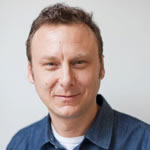
“[Passive House] is a clearly measured metric that focuses closely on energy efficiency and uses sophisticated math to prove it. It’s science, and it works.”
Lukas Armstrong, Lukas Armstrong Design + Consulting
Lukas Armstrong: When you’re dealing with solar power—and we had other alternative energy sources like wood and a little solar thermal—you really become intensely aware of the amount of energy that you have available and how hard it is to get. When I started designing buildings it only made sense to minimize energy use and thereby your costs.
gb&d: When did you first learn about Passive House?
Armstrong: It was about two years ago, when I took the Passive House course offered by the Canadian Passive House Institute in Vancouver.
gb&d: What made you want to get so involved?
Armstrong: When I started getting into residential design of my own, I looked around to see what was on the cutting edge and realized Passive House was the most aggressive energy-efficiency standard in the world.
gb&d: Besides its stringent standards, what else about Passive House attracted you to it?
Armstrong: It’s a clearly measured metric that focuses closely on energy efficiency and uses sophisticated math to prove it. It’s science, and it works. So we’re using science to create buildings that respond to our climate-change situation.
gb&d: What are you doing to get others involved?
Armstrong: I’ve spoken both regionally and provincially on Passive House, and I expect to, at some point through digital media, be able to reach out and influence the public and my peers. And, of course, marketing to my clients. I’m going to do anything I can to get the word out.
gb&d: What sort of limitations do you think it has?
Armstrong: Potentially the only shortcoming is overcoming the legislation that allows bad buildings to be built. We need to educate the public, the building professionals, the contractors, the construction industry, and more importantly, we have to have our governments change legislation and insist on this building standard.
For more on Passive House check out our feature story, “Welcome to the Passive House Party,” and an editorial by Katrin Klingenberg, executive director of Passive House Institute US.

